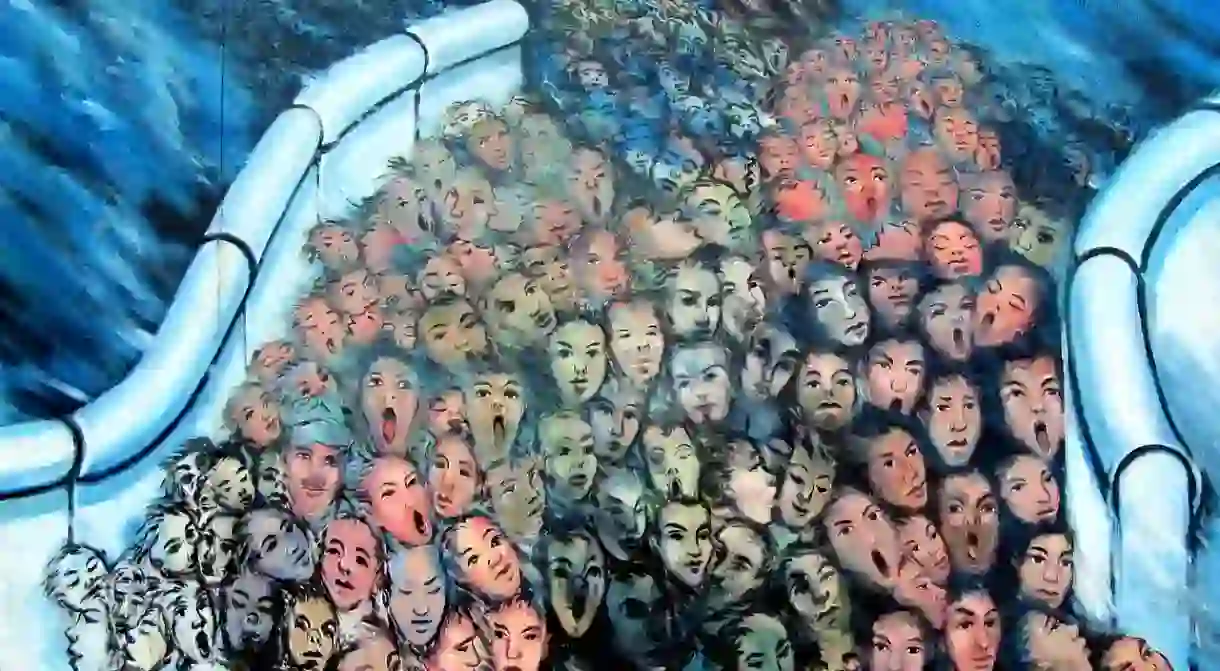A Brief History of the Berlin Wall

The Berlin Wall stood as a symbol of oppression for almost three decades. Creating a nation of divided citizens, the imposing wall is one of the most iconic structures of the 21st century and its reach could be felt all around the world. Delving into the history of the Berlin Wall is a step back into the past of a world struggling to recover from the Second World War.
Dividing east and west
The end of World War Two signalled an unsure future for defeated Germany. At a pair of Allied Peace conferences in Yalta and Potsdam, the fate of Germany’s territories was determined. It was here that it was decided to split Germany into four ‘allied zones’, the eastern part of the country went to the Soviet Union and the western part to the United States, Britain and eventually France. Despite Berlin sitting entirely in the eastern part of the country, during the Yalta and Potsdam agreements the city was divided into similar zones. Simmering tension of the Cold War was only exacerbated by the decision to divide up Berlin. The existence of West Berlin, a consciously capitalist city deep within a communist East Germany, ‘stuck like a bone in the Soviet throat,’ according to Soviet leader Nikita Khrushchev.

Berlin Airlift
So tenuous were the relations between East and West that Russia began plotting to drive the United States, Britain and France out of Berlin for good. In 1948, a Soviet blockade of West Berlin was set up, blocking off all rail and road access to West Berlin in an effort to starve the western Allies out of the city. In one of the most dramatic standoffs in the history of the Cold War, the Berlin blockade saw the United States and its allies supplying their sectors of the city from the air. Known as the Berlin Airlift, the allied nations flew in more than 2.3 million tons of food, fuel and other goods for over a year, until the Soviets ended the blockade, bringing with it a period of relative calm.

Suddenly a wall arrives
After a decade of calm, tensions flared again in 1958 and for the next three years, the Soviets, encouraged by the seemingly endless flow of refugees from east to west, most of whom were skilled workers, started to threaten West Berlin. Summits, conferences and talks all came and went without any concrete solutions, meanwhile, the flood of refugees continued and by June 1961 roughly 19,000 people left the GDR through Berlin. The numbers continued to rise until on August 12, 1961, when around 2,400 defected to Berlin, the largest number of people to leave East Germany in a single day. That night, Soviet leader Khrushchev gave the East German government permission to stop the flow of emigrants by closing the city’s border for good. In one night, part of the Berlin Wall was erected, causing an already divided nation to awake in disarray. Despite this, the wall did defuse the mounting tensions of the Cold War and slowed the flood of refugees moving from east to west. The opposing structure didn’t stop people from trying to make the great escape to the west and roughly 171 people lost their lives trying to defect, while over 5,000 more East Germans managed to make the impossible journey to the west.

Its eventual fall
Nearly three decades later, as the Cold War began to thaw, on November 9, 1989 the spokesman for East Berlin’s Communist Party announced a change in his city’s travel ban with the West. He stated that starting that day, citizens of the GDR were free to cross the city’s borders. East and West Berliners flocked to the wall, drinking beer and champagne and chanting ‘Tor auf!’ (Open the gate!). Confused and overwhelmed guards opened the checkpoints and just like that, the city was reunited. More than 2 million people from the East and the West gather to participate in a celebration that was, as one journalist wrote, ‘the greatest street party in the history of the world.’ As quickly as it arrived it seemed the Berlin Wall would fall and Germany was reunited for the first time since 1945.














